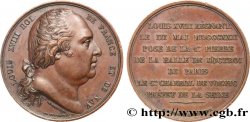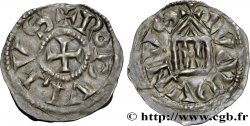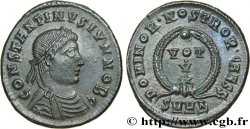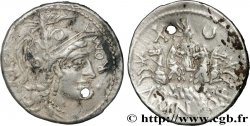Live auction - fmd_469085 - 10 cent. Anvers au double L, frappe de l’arsenal de la marine 1814 Anvers F.130D/1
You must signin and be an approved bidder to bid, LOGIN TO BID. Accounts are subject to approval and the approval process takes place within 48 hours. Do not wait until the day a sale closes to register. Clicking on "BID" constitutes acceptance of the terms of use of cgb.fr private live auctions.
Bids must be placed in whole Euro amounts only. The sale will start closing at the time stated on the item description; any bids received at the site after the closing time will not be executed. Transmission times may vary and bids could be rejected if you wait until the last second. For further information check the Live auction FAQ
All winning bids are subject to a 18% buyer’s fee.
All winning bids are subject to a 18% buyer’s fee.
| Estimate : | 250 € |
| Price : | 150 € |
| Maximum bid : | 150 € |
| End of the sale : | 30 January 2018 16:01:13 |
| bidders : | 1 bidder |
Type : 10 cent. Anvers au double L, frappe de l’arsenal de la marine
Date: 1814
Mint name / Town : Anvers
Quantity minted : 36000
Metal : bronze
Diameter : 35,29 mm
Orientation dies : 12 h.
Weight : 24,40 g.
Edge : brute
Catalogue references :
Obverse
Obverse legend : ANVERS / 1814.
Obverse description : Au centre deux L croisées et affrontées dans une couronne formée de deux branches d'olivier nouées à leur base par un ruban sur lequel se trouve la signature JEAN-LOUIS/ GAGNEPAIN du graveur.
Reverse
Reverse legend : MONNAIE / OBSIDIONALE.
Reverse description : Au centre 10 / CENT..
Commentary
Pas de point après 1814 ; la branche gauche se termine par deux feuilles et la droite par une touffe dont la feuille centrale arrive à la limite des extrémités de celles de gauche. Frappe médaille. Sans traces de coin choqué sous 1814.
Comme le fait remarquer M. Colaert, “un incident au moment de la trempe du coin de revers après la gravure a provoqué un affaissement entre le E final de MONNAIE et le E final d’OBSIDIONALE”.
Comme le fait remarquer M. Colaert, “un incident au moment de la trempe du coin de revers après la gravure a provoqué un affaissement entre le E final de MONNAIE et le E final d’OBSIDIONALE”.








 Report a mistake
Report a mistake Print the page
Print the page Share my selection
Share my selection Ask a question
Ask a question Consign / sell
Consign / sell
 Full data
Full data















